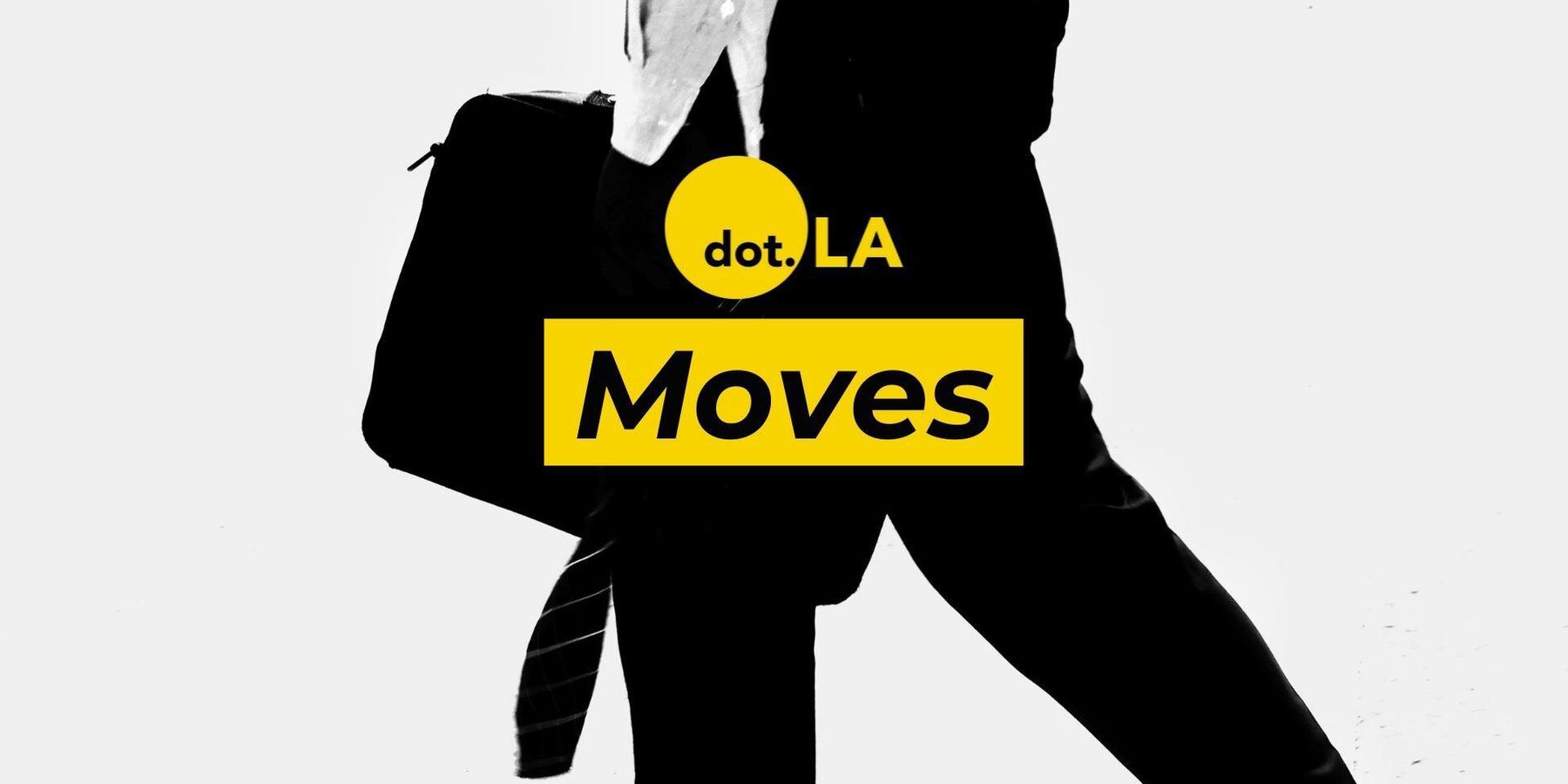

Get in the KNOW
on LA Startups & Tech
X
Photo by Julian Myles on Unsplash
SoCal Venture Pipeline, Pacific Western Bank Partner on Getting Early-Stage LA Startups VC Funding
Kristin Snyder
Kristin Snyder is dot.LA's 2022/23 Editorial Fellow. She previously interned with Tiger Oak Media and led the arts section for UCLA's Daily Bruin.
The SoCal Venture Pipeline program is partnering with Pacific Western Bank to continue connecting early-stage startups with venture capital.
Now formally known as the SoCal Venture Pipeline powered by Pacific Western Bank, the program has matched new startups with investors since launching in 2021. Pacific Western will serve as its lead sponsor, joining continuing supporters Wilson Sonsini and KPPB LLP. The Pipeline originally only considered startups looking for Series A funding, but expanded to include seed funding in February. Alliance managing director Eric Eide said adding Pacific Western to the program will further help its startups navigate both Series A and seed fundraising.
“That's really been where we've seen a lot of founder demand,” Eide said. “The amount of founders applying has tripled since [adding seed funding]. There's a lot of interest, particularly amongst the VC community or network, to see high-quality, vetted deal flow.”
Since launching a year ago, the Pipeline has accepted 31 of its 247 applicants. As a rolling program, the selection committee reviews applications on a monthly basis. Companies must be tech-focused and based in Southern California. For Series A funding, Eide said they look for teams that have already raised $500,000 angel or seed investment and are looking to raise at least $4 million. He said companies have to show demonstrable traction at the seed level, have a compelling market opportunity, and have raised at least $250,000.
Eide said they work closely with the chosen founders to connect them to the Pipeline’s network of 200 venture capitalists. Joining the program as a new sponsor, Eide said Pacific Western Bank will help advise founders and secure capital. The Cove Fund venture partner JC Ruffalo, who volunteers to help the program’s founders, told dot.LA in an email that the Pipeline exposes venture capital firms to companies that they might not otherwise have a chance to connect with.
“The SoCal Venture Pipeline is supporting and building a legacy of tech and medtech innovation and growth which will create a more robust and stronger innovation ecosystem here in Southern California,” he said.
Pacific Western Bank SVP Mark diTargiani said the bank was drawn to the Pipeline’s wide reach across Southern California. For early-stage startups, the bank provides free banking services, high-yield checking accounts, and a bit of unsecured credit card debt. diTargiani said they have already begun giving advice to companies in the program and have also introduced new investors to the Pipeline.
“What we saw was an opportunity to help to build a community of early-stage startups throughout the L.A. ecosystem,” diTargiani said.
Despite the unstable market, there is plenty of capital for early-stage startups, diTargiani said. Though the funding environment has changed in recent months, Eide said people are still making deals—and the Pipeline’s investor network can help founders make important connections to get those deals.
“It's still a good time to be raising relatively even if it's a little bit different than the heady days of last year,” Eide said.
From Your Site Articles
- SoCal Venture Pipeline Connects Startups with Series A Funds - dot ... ›
- Headspace Raises $93 Million, Plans Growth - dot.LA ›
- Zillow Co-Founder Spencer Rascoff Has Advice for #LATechWeek ... ›
Related Articles Around the Web
Kristin Snyder
Kristin Snyder is dot.LA's 2022/23 Editorial Fellow. She previously interned with Tiger Oak Media and led the arts section for UCLA's Daily Bruin.
https://twitter.com/ksnyder_db
LA Tech ‘Moves’: Mapp Gains New CPO and CTO, Prodoscore Taps Boeing Exec
05:00 AM | May 26, 2023
LA Tech ‘Moves’:
“Moves,” our roundup of job changes in L.A. tech, is presented by Interchange.LA, dot.LA's recruiting and career platform connecting Southern California's most exciting companies with top tech talent. Create a free Interchange.LA profile here—and if you're looking for ways to supercharge your recruiting efforts, find out more about Interchange.LA's white-glove recruiting service by emailing Sharmineh O’Farrill Lewis (sharmineh@dot.la). Please send job changes and personnel moves to moves@dot.la.
***
Mapp, a digital marketing tools developer named Eric Lubow as chief product and technology officer. Lubow was most recently vice president of engineering at Thrasio, and previously was a founder and CTO at HealthHive, Mymee, and SimpleReach.
Former Sitecore chief marketing officer Paige O’Neill joined sales enablement platform Seismic as CMO.
Security and compliance automation platform Drata welcomed Matt Hillary as vice president security and chief information security officer (CISO) and Conor Nolen as chief customer officer. Hillary most recently served as SVP, systems and security and CISO at Lumio, while Nolen served as SVP of Customers for Life at Clari.
Cineverse, a streaming and entertainment company, promoted Erick Opeka to president of cineverse, Tony Huidor to chief operating Officer and chief technology officer and appointed Mark Torres as chief people officer. Opeka currently serves as the company’s CSO, Huidor previously served as SVP of product and technology, while Torres worked at companies such as Sony Pictures, Ticketmaster and Variety.
Employee visibility and productivity intelligence software Prodoscore hired veteran technologist Raghu Kopalle as vice president of product and engineering. Most recently, Kopalle served as Boeing’s product leader of airborne software systems.
Wiliot, an IoT platform tapped Antony Yousefian as vice president of climate and circularity. Yousefian held various executive positions at climate technology startups and impact investment funds.
EVgo, a fast charging network for electric vehicles (EVs) added Paul Segal and Jonathan Seelig to its board of directors. Prior to joining, Segal served as Chief Executive Officer of LS Power since 2011, while Seelig co-founded Ridge, a cloud computing platform and Akamai Technologies, Inc., a content delivery network, cybersecurity and cloud service company.
YOOM, a generative AI 3D technology company, appointed Nir David as head of gaming. Prior to this role, David was director of strategic partnerships at Playtika and led key relationships with major platforms such as Meta, Apple, Google, Windows and Amazon.
From Your Site Articles
- LA Tech ‘Moves’: Community Hires New CEO, Bento Box Welcomes President ›
- LA Tech ‘Moves’: Mahmee Welcomes New VP, NINJIO Stacks Exec Team ›
- LA Tech ‘Moves’: SpaceX Taps Former NASA Human Spaceflight Official ›
Related Articles Around the Web
Read moreShow less
Decerry Donato
Decerry Donato is a reporter at dot.LA. Prior to that, she was an editorial fellow at the company. Decerry received her bachelor's degree in literary journalism from the University of California, Irvine. She continues to write stories to inform the community about issues or events that take place in the L.A. area. On the weekends, she can be found hiking in the Angeles National forest or sifting through racks at your local thrift store.
Swipe Less, Know More, Build Faster: LA’s AI Push
10:25 AM | November 07, 2025
🔦 Spotlight
Happy Friday LA!
This week was about AI moving from side feature to core product strategy. Tinder is testing an opt-in “Chemistry” flow that learns your interests with permission, including signals from your camera roll, to propose fewer, higher quality matches. Snap is wiring Perplexity’s conversational, source linked answers directly into Snapchat. And Rivian spun out Mind Robotics to take the industrial AI it built for its own lines to a broader market.
Tinder Bets on AI for Quality Over Quantity
Tinder is piloting Chemistry, an opt-in experience that starts with a short Q&A and, with permission, analyzes cues from your camera roll to build a richer picture of what you like. The aim is to cut through swipe fatigue by presenting a smaller set of high intent matches each day, first in New Zealand and Australia, as part of Match Group’s larger 2026 product overhaul. The pitch is relevance and control, with phased rollout and consent front and center; if engagement lifts, expect tighter loops between real world signals and match recommendations.
Snap Brings Perplexity Answers into Snapchat
Snap struck a deal with Perplexity to deliver conversational, source linked results inside Snapchat starting in early 2026, backed by a one year cash and equity package reportedly worth about 400 million dollars. Ask a question where you already spend time and get a cited answer without hopping to a mobile browser, with Snap emphasizing that Snapchat data will not train Perplexity’s models. The announcement landed alongside improving fundamentals, signaling Snap’s plan to make trustworthy answers feel native to social habits rather than a separate destination.
Rivian Spins Out Mind Robotics
Rivian formed Mind Robotics to productize the software and systems that coordinate its own manufacturing, raising roughly 110 to 115 million dollars led by Eclipse. The goal is to sell factory floor intelligence beyond vehicles, including adaptive quality control, smarter material handling, and autonomous workflows that reduce downtime. With Rivian’s headquarters in Irvine and a growing regional robotics talent base, this puts Southern California on the map for next generation industrial automation tied to the EV supply chain.
Bottom line
LA’s tech scene is pushing AI toward measurable outcomes: better match quality, faster answers with clear citations, and more efficient production. Keep an eye on the unsexy details, including privacy choices and user consent, data boundaries between partners, and how each team turns these features into monetization. That is where this week’s announcements will turn into lasting advantage.
🤝 Venture Deals
LA Companies
- Evotrex exited stealth with a $16M Pre-A round led by Xstar Capital, with Unity Ventures, Kylinhall Partners, Vision Plus Capital, and founders of Anker Innovations participating; the capital will expand engineering and speed commercialization of its first product. The California startup plans to debut what it calls the world’s first power-generating RV trailer at CES 2026, designed to provide off-grid power and help extend EV range while towing. - learn more
- Zest AI, which provides AI-driven credit underwriting and lending intelligence for banks and credit unions, closed an oversubscribed, customer-led financing round from SchoolsFirst, Members 1st, ORNL, and Truliant credit unions, with participation from Citi Ventures. The company says the round came at a higher valuation than its prior growth raise and will fund more automation across the borrower journey and a broader rollout of LuLu, its generative AI lending-intelligence platform. - learn more
- Estate Media, the social first real estate media startup co-founded by “Million Dollar Listing” star Josh Flagg, says it has surpassed $6M in revenue and closed a $1M seed round, bringing total funding to $2.65M. New investors include Tinder co-founder Justin Mateen and real estate and media figures such as Samir Mezrahi (“Zillow Gone Wild”), Tracy Tutor, and Hudson Advisory, which the company says positions it for profitability and further growth. - learn more
LA Venture Funds
- Cedars Sinai Ventures joined Amae Health’s $25M Series B, led by Altos Ventures with participation from Quiet Capital, Bling Capital, Healthier Capital, and 8VC. The company, which is building an AI enabled clinic model for severe mental illness, says the funding will accelerate nationwide clinic openings, advance its AI care platform, and support research into conditions like schizophrenia, bipolar disorder, and treatment resistant depression. Total funding now tops $50 million. - learn more
- Magnify Ventures participated in MiSalud Health’s new funding round led by IGNIA, alongside Ulu Ventures, Redwood Ventures, Amplifica Capital, and client investor Taylor Farms. MiSalud, which delivers bilingual virtual and on-site care for blue-collar workforces, says the capital will help it expand into 20 new states and add services typically offered only in person; reports peg total funding at about $18.3 million. - learn more
- Alexandria Venture Investments participated in Accipiter Biosciences’ $12.7M seed round, which was co-led by Takeda and Flying Fish Partners. The Seattle startup is developing AI-designed de novo protein therapeutics that can combine multiple mechanisms in a single molecule, and it also announced partnerships with Pfizer and Kite Pharma alongside the financing. The company says the funds will advance preclinical programs in immunology and oncology and further build out its computational design platform. - learn more
- Rebel Fund participated in Cactus’s $7M seed round alongside Wellington Management, Y Combinator, and Pelion Venture Partners. Cactus builds a 24/7 AI copilot for home service businesses that answers calls, qualifies leads, books jobs, and manages follow ups to capture after hours demand. The company says the funding will support product expansion and go to market growth in the United States. - learn more
- B Capital joined the angel round for Microtide Biotechnology (also known as Weitao Bio), which raised over RMB 100 million, led by Qiming Venture Partners. The Shanghai company, spun out from Sile Biomedicine’s in vivo CAR T platform, is developing targeted LNP delivered in vivo CAR T therapies for blood cancers and autoimmune diseases, and will use the funds to advance its first candidate and further develop its core platform. - learn more
- Patron co led Flint’s $15M Series A, with participation from the USC Viterbi School of Engineering alongside Basis Set Ventures, AME Cloud Ventures, Afore Capital, and Y Combinator. Flint builds an AI platform that helps teachers personalize K 12 learning, and the company says the funding will accelerate product development and scale the service to more schools. - learn more
- Rebel Fund participated in Freya’s $3.5M round alongside Y Combinator, 212 VC, N1 Tech, BD Partners, and others. Freya is building voice automation tools that let companies create and manage natural language voice workflows, aiming to replace brittle IVR systems with more flexible, AI powered voice agents. The company says the funding will accelerate product development and early go to market efforts. - learn more
- Regeneration.VC led Hullbot’s roughly $10.6M Series A, with participation from Climate Tech Partners, Katapult Ocean, Folklore, Trinity Ventures, Rypples, NewSouth Innovations, and Bandera Capital. The Australian startup builds autonomous hull-cleaning robots that remove biofouling to cut ship fuel use and emissions, and it plans to use the funding to ramp manufacturing, expand global service hubs, and develop larger robotic platforms. - learn more
- M13 led Teleskope’s $25M Series A, with continued participation from Primary Venture Partners and Lerer Hippeau. Teleskope builds an agentic data security platform for the AI era, and says the capital brings total funding to $32.2M to accelerate product development and scale go to market. - learn more
- SmartGateVC participated in Coherence Neuro’s $10M seed round led by Topology Ventures and Artesian, alongside Blackbird, Possible Ventures, XEIA, Jumpspace, Divergent, Spacewalk VC, and others. San Francisco based Coherence Neuro is developing a closed-loop, bi-directional neurotechnology platform to treat cancers like glioblastoma by decoding and modulating electrical signals; the funding will support its first human trials and further product development. - learn more
- Rebel Fund participated in Mecha Health’s $4.1M seed round led by Valia Ventures, alongside Y Combinator, Reach Capital, and Phosphor Capital. Mecha Health is an applied AI lab that builds foundation models for radiology which read medical images and generate fully structured reports, and the new capital supports continued development and deployment of these systems. - learn more
LA Exits
- Green Econome was acquired by VCA Green, the sustainability practice of VCA Consultants. The Los Angeles firm is known for lifecycle strategies, building performance reporting, and compliance services like ENERGY STAR, LEED, CALGreen, and Title 24; combining it with VCA Green’s energy modeling, project management, and field verification creates a single team serving both new construction and existing buildings. Marika Erdely, Green Econome’s founder, is joining VCA Green as a principal. - learn more
- InData Consulting was acquired by The 20 MSP as part of a three-company deal that also included Red Level Group and iStreet Solutions. The additions expand The 20 MSP’s footprint in California, Arizona, Michigan, and the Sacramento area, bringing its total to 44 acquisitions in about three years. The company says it sources targets from its peer group to speed integrations and reduce attrition. - learn more
- Caulipower was acquired by Urban Farmer, a Paine Schwartz Partners portfolio company, creating a vertically integrated “better for you” frozen foods platform that pairs Urban Farmer’s manufacturing with Caulipower’s nationwide brand and distribution. Caulipower will continue operating under its name, with founder Gail Becker joining Urban Farmer’s board; financial terms were not disclosed. - learn more
- StudyOS was acquired by Sitero, a technology-enabled CRO, which simultaneously launched SiteroAI to position itself as the industry’s first fully AI-powered CRO. StudyOS’s Ash clinical-trial agent will be integrated with Sitero’s Mentor eClinical suite, with Sitero projecting 20–30% efficiency gains across the trial lifecycle beginning in 2026; terms were not disclosed. - learn more
Read moreShow less
RELATEDTRENDING
LA TECH JOBS


